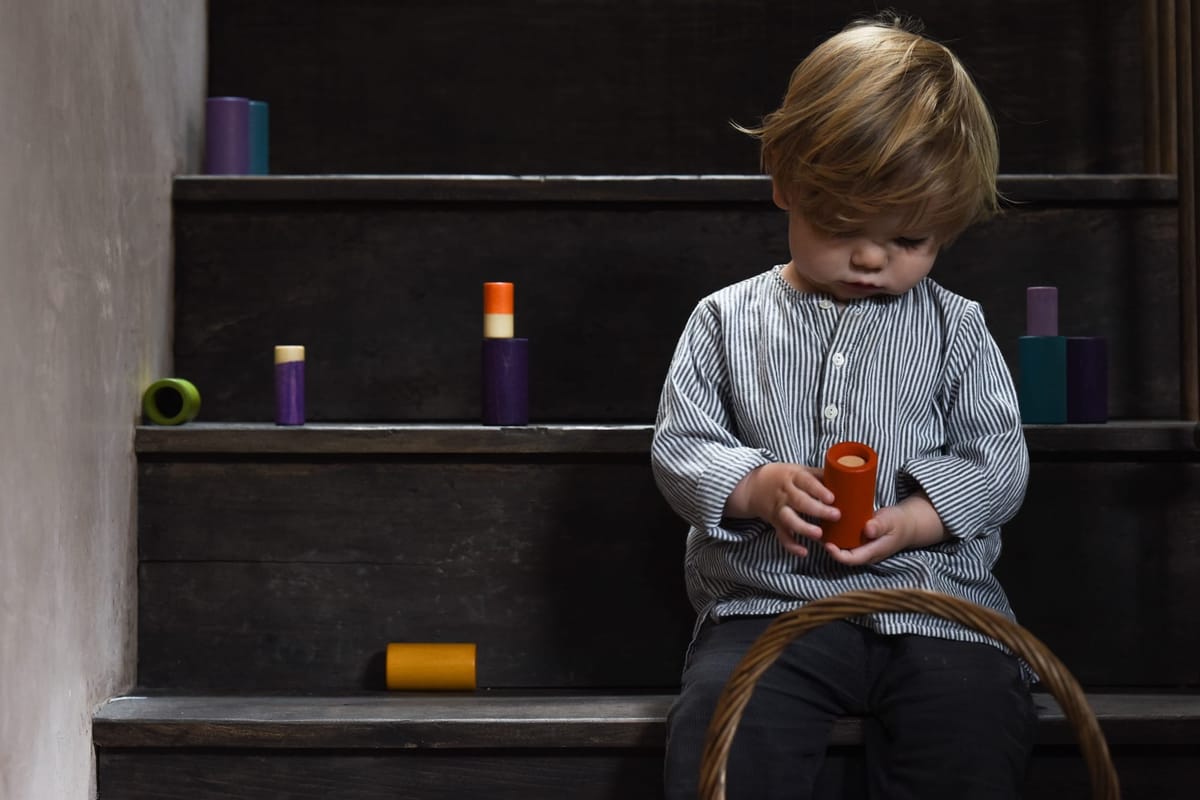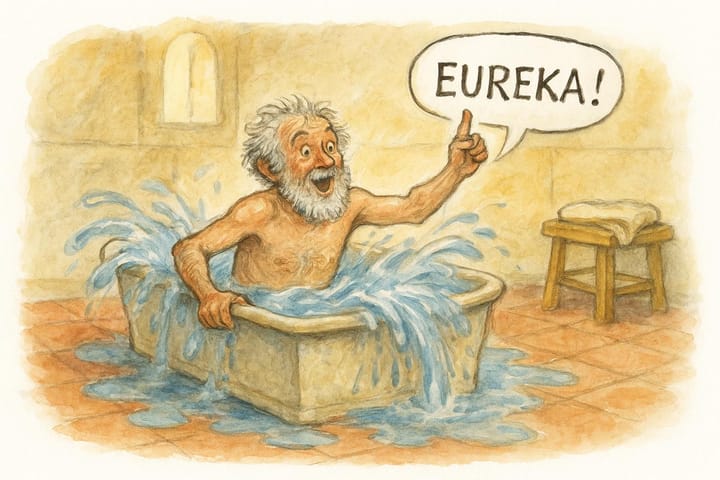Introducing Start with the Child

See the world through your child's eyes
When it comes to play, children see the world differently. What might seem like chaos to us - stacking blocks, moving toys, or scribbling on paper - can actually be the beginning of something deeper.
This is the heart of Start with the Child: understanding how your child sees and interacts with the world, and using that knowledge to create a rich, enabling environment for her to explore, learn, and grow.
It’s not about providing more toys or constantly coming up with activities. It’s about seeing things from her perspective and starting where she is, with her interests, abilities, and unique way of exploring her surroundings.
Decoding your child’s play
At first glance, your child’s play might look random - moving toys from one side of the room to another, repeating the same action over and over. But beneath this surface is her own logic, a way of exploring the world that makes perfect sense - if only we knew how to see it.
That’s where Start with the Child comes in. This isn’t just about fostering independent play. It’s about helping you decode your child’s play behaviours so you can recognise the patterns, interests, and skills she’s developing. Once you understand these signals, you’ll know exactly what kind of environment, materials, and opportunities will help her grow.
When parents understand what their child is capable of at each developmental stage, they can tailor the materials and environment they offer to maximise the play potential afforded by the experience. This leads to more engaging and developmentally challenging play - at just the right level for your child.
For example, have you noticed how she’s fascinated with stacking blocks or pouring water repeatedly? These aren’t random actions - they are clues to how she’s learning, problem-solving, and mastering her world. Your role is to decode these clues and provide the right space and tools for her to explore.
Creating playful playspaces
One of the most powerful ways to support your child’s development is to create the right environment—one that naturally invites her to explore.
In the Reggio Emilia philosophy, the environment is called the “third teacher”because it plays a critical role in shaping how children learn. With Start with the Child, you’ll receive my Guide to Playful Playspaces, a practical PDF that teaches you how to create an enabling environment at home.
By knowing what your child is capable of and interested in, you can adjust her surroundings to suit her developmental stage. The right activity at the right time can make all the difference, unlocking your child’s natural curiosity while giving you the peace of mind that she’s fully engaged.
This guide will show you how to:
- Set up play stations that encourage exploration and autonomy.
- Choose materials that inspire curiosity and problem-solving (and they don’t have to be expensive!).
- Organise your space to let your child move freely between activities, building her confidence as she discovers new ways to play.
How perception shapes play
To truly see the world through your child’s eyes, it helps to understand how her perception develops at each stage. Did you know that newborns only see in black and white, with limited detail? This has a huge impact on the types of toys and materials that engage them. Simple, high-contrast objects like a black-and-white mobile stimulate their vision without overwhelming them.
As your child grows, her perception sharpens—she begins to see in colour, track moving objects, and understand depth. By the time she’s a toddler, she can explore more complex materials, manipulate objects, and experiment with her environment. Recognising these developmental shifts helps you create play experiences that are not only engaging but also developmentally challenging.
For example:
- Newborns need calm, high-contrast visuals to avoid overstimulation, so something as simple as a black-and-white mobile can be perfect.
- Toddlers benefit from open-ended materials that encourage exploration, like stacking toys or items they can sort and manipulate.
- Preschoolers thrive when given more complex puzzles, art supplies, or building sets that stimulate both fine motor skills and creative thinking.
With Start with the Child, you’ll learn how to align your child’s play environment with her developing abilities, ensuring that she gets the most out of every stage of her growth.
A quick preview: the sorting and stacking discovery box
Here’s a simple activity from the Guide to Playful Playspaces that you can try today:
The sorting and stacking discovery box
Gather a mix of everyday objects that encourage investigation and problem-solving. Here’s an example of what you can include:
- Small cardboard tubes (toilet paper rolls or cut-up paper towel rolls)
- Wooden blocks or stacking rings
- Clothespins
- Large buttons or coins
- Small containers with lids or compartments
Place all the objects in a box.
Your child’s natural curiosity will lead her to ask herself all kinds of interesting questions. She will want to know how the objects fit, stack, or move.
I wonder if this button fits inside the tube?
Can I stack these blocks without them falling?
What happens if I put this inside the container and close the lid?
As she explores, she’ll discover which items fit together, how things balance, and what happens when she moves objects in different ways.
The difference between discovery boxes and treasure baskets:
Both discovery boxes and treasure baskets encourage exploration, but there’s a subtle difference that reflects your child’s developmental stage.
- Discovery boxes are typically for toddlers and contain a variety of materials that invite investigation. Objects in a discovery box encourage your child to explore how they work together - things to open, stack, sort, or manipulate. This subtle shift comes as your child moves from exploring what objects are (as babies do) to discovering what these objects can do.
- Treasure baskets are more commonly used with babies and focus on sensory exploration. A treasure basket might include natural materials like pine cones, smooth stones, and soft fabrics. The emphasis here is on allowing babies to discover the properties of materials, like texture, sound, and shape, which helps them make sense of the world through their senses.
These tools support your child in leading her own learning, allowing her to explore at her own pace and stage of development.
The Play Tools: A key to decoding play
Alongside creating the right environment, your child needs the right mindset for play. Enter The Play Tools. These are quick, actionable strategies to help your child self-regulate and keep playing when things go wrong. Whether it’s handling frustration or shifting focus, The Play Tools become your child’s internal compass, helping her manage emotions and stick with her play.
If you decide to upgrade to Co-Conspirators, you’ll receive lifetime access to The Play Tools - the part of Play with Purpose that has generated the most excitement and interest during launch week.
Together, Start with the Child and The Play Tools will empower you to support your child’s natural curiosity while giving her the freedom to play independently.
Start with the Child isn’t just about play - it’s about giving your child the tools to become her own teacher. With the right environment, she’ll have the confidence to explore, the resilience to try again when things go wrong, and the joy of learning through play.

Comments ()